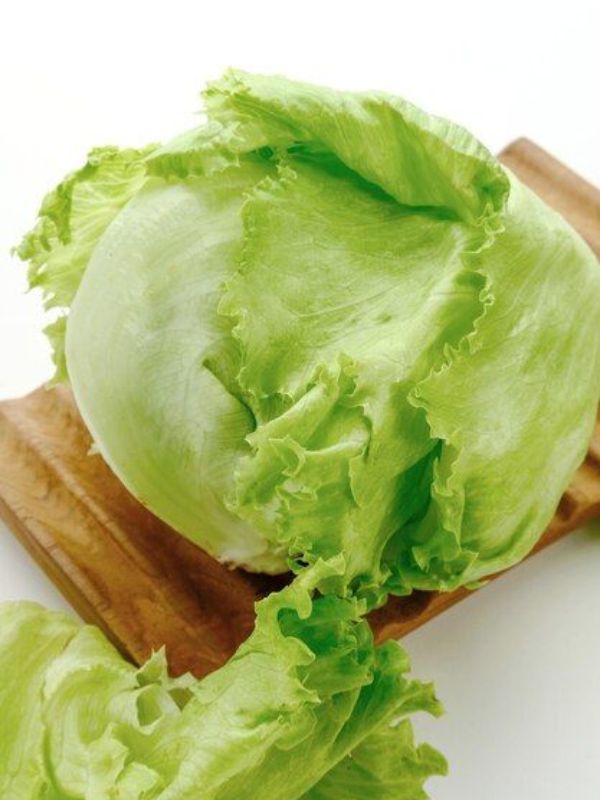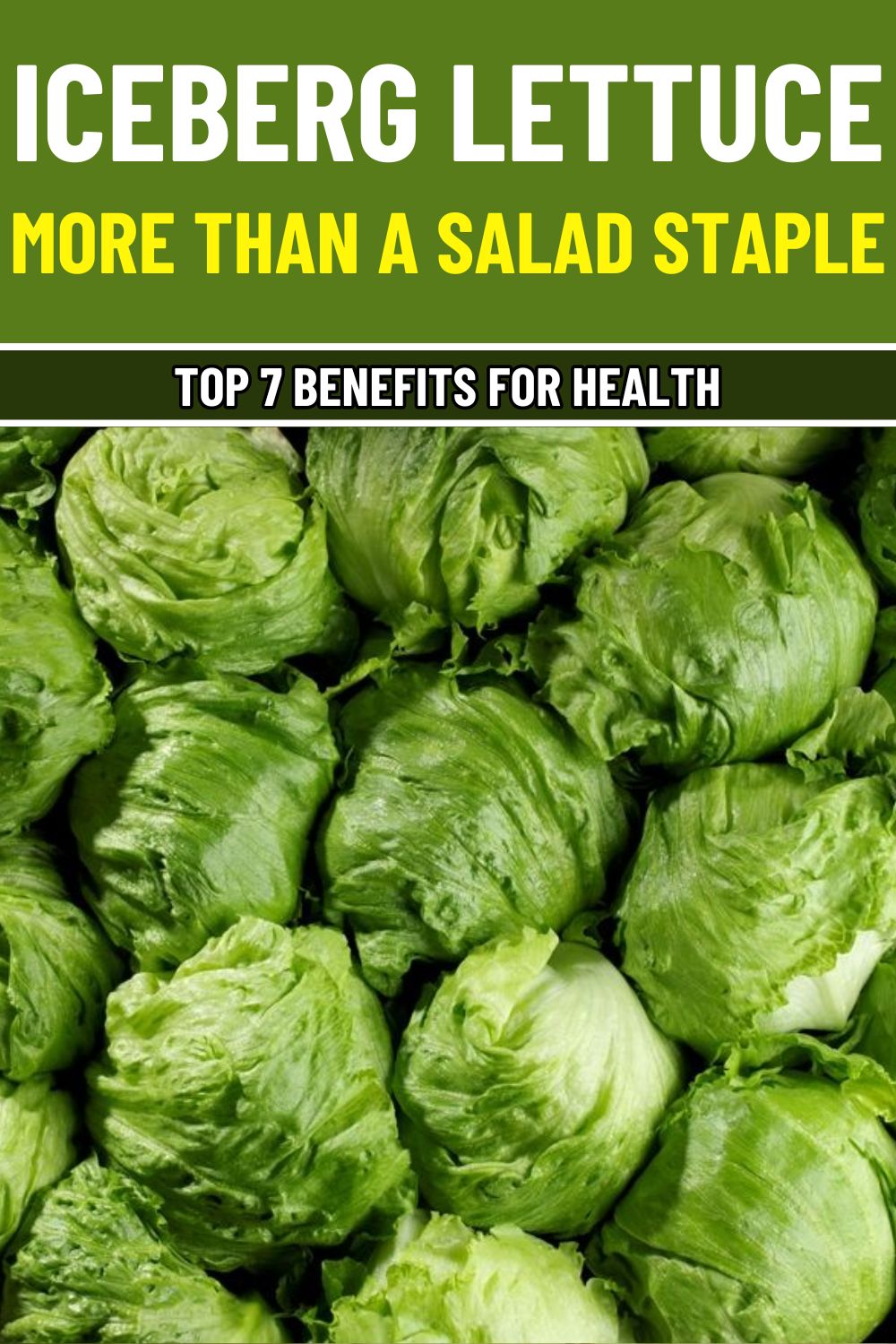When you think of iceberg lettuce, you might picture a plain side salad or a sandwich topping. But have you ever considered its incredible health benefits?
This crisp, hydrating green is more than just a crunchy addition to meals; it’s a low-calorie powerhouse packed with nutrients that can boost your overall well-being.
Are you ready to discover why iceberg lettuce is worth adding to your diet? Keep reading as we explore its benefits, how to use it, and potential cautions to keep in mind.
Nutritional Profile of Iceberg Lettuce
Before diving into the benefits, let’s take a look at what makes iceberg lettuce so nutritious. In just 100 grams of iceberg lettuce, you’ll find:
- Water: 95% hydration
- Calories: Only 14 calories
- Fiber: 1 gram
- Vitamin K: 24% of your daily value
- Vitamin A: 7% of your daily value
- Folate: 10% of your daily value
It’s also a great source of antioxidants, including beta-carotene and lutein, which are essential for eye and skin health.

Health Benefits of Iceberg Lettuce
1. Hydrates Your Body Naturally
With a water content of 95%, iceberg lettuce is an excellent way to stay hydrated. Dehydration can cause fatigue, headaches, and sluggishness, but incorporating iceberg lettuce into your meals can help replenish lost fluids.
This makes it a perfect summer food for keeping cool and refreshed.
2. Promotes Digestive Health
Iceberg lettuce is low in calories and contains fiber, which aids in digestion and prevents constipation. The fiber works by promoting regular bowel movements and supporting gut bacteria, which improves overall digestive health.
Regular consumption of iceberg lettuce can contribute to a healthier gut microbiome over time.

3. Boosts Bone Strength
Rich in vitamin K, iceberg lettuce is a great way to support bone health. Vitamin K is essential for calcium absorption and helps prevent bone loss, reducing the risk of conditions like osteoporosis.
Studies have shown that diets with adequate vitamin K can significantly improve bone density over time.
4. Supports Healthy Vision
Thanks to its beta-carotene and lutein content, iceberg lettuce contributes to better eye health. These antioxidants reduce the risk of macular degeneration and cataracts by protecting your eyes from harmful free radicals.
Including iceberg lettuce in your diet can be particularly beneficial for maintaining sharp vision as you age.

5. Aids in Weight Management
Iceberg lettuce is incredibly low in calories while being filling due to its high water and fiber content. Adding it to meals can help you feel full for longer, making it an excellent choice for those aiming to lose or maintain weight.
It’s a great alternative to calorie-dense foods when creating a balanced plate.
6. Improves Heart Health
The folate in iceberg lettuce plays a role in heart health by helping regulate homocysteine levels, an amino acid that can contribute to cardiovascular issues when elevated.
Additionally, the potassium in iceberg lettuce helps maintain healthy blood pressure, supporting overall cardiovascular function.

7. Detoxifies the Body
Iceberg lettuce’s water content, combined with its antioxidants, helps flush toxins from the body. The fiber also supports the removal of waste, making it a gentle detoxifying food that cleanses your system naturally.
How to Use Iceberg Lettuce in Your Diet
1. Fresh Salads
First, wash the lettuce leaves thoroughly to remove dirt or pesticides. Then, chop them into bite-sized pieces and toss them with your favorite vegetables, a lean protein source like grilled chicken, and a light dressing for a refreshing salad.
2. Wraps and Sandwiches
Use iceberg lettuce leaves as a low-carb alternative to tortillas or bread. Wrap them around grilled meat, tofu, or vegetables for a satisfying meal that’s low in calories and carbs.
2. Smoothies
Blend iceberg lettuce with fruits like apples, cucumbers and a splash of lemon juice for a hydrating and detoxifying green smoothie. This is an easy way to incorporate its nutrients without eating a salad.
3. Stir-Fries
You can add iceberg lettuce to stir-fries toward the end of cooking. It adds a subtle crunch and works well with dishes featuring chicken, shrimp, or tofu.
4. Tacos or Burgers
Replace taco shells or burger buns with iceberg lettuce for a healthier, gluten-free option.

Cautions and Precautions
Compared to darker greens like spinach or kale, iceberg lettuce has fewer nutrients. It’s best to pair it with other nutrient-rich foods to create a balanced diet.
Iceberg lettuce may contain pesticide residues. You should always wash it thoroughly before consuming it, and opting for organic produce can reduce this risk.
Eating excessive amounts of iceberg lettuce could lead to bloating due to its fiber and water content. Moderation is key.
Disclaimer
This article is for informational purposes only and is not a substitute for professional medical advice.
Always consult a healthcare provider before making dietary changes, especially if you have specific health conditions.

The Health Benefits of Iceberg Lettuce: Why It’s More Than Just a Salad Staple
